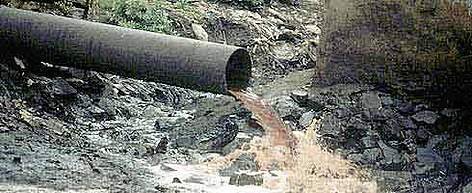River pollution rising in Mid Nepal...
Water Pollution in Nepal : Source, Causes, Solution, Effects
Pollution is an undesirable change in physical and biotic element of the environment which affects adversely the plants and animals life. Water pollution deals with the pollution of aquatic medium and them affects on biotic community of water. It degrades the natural quality of water and makes it unfit for any use. The process of modernization characterized by the rapid industrialization and urbanization in both developed and developing countries including Nepal have led to the growth of environment pollution. As a result, the issue of sustainable industrial development is getting prominence in global scale. In addition, increased pollution from urban and industrial effluents released in upstream states would make even this reduced flow available less fit for human use.
Sources of Water Pollution in Nepal
The major sources of water pollution are grouped as follow:
- Industrial source – Inorganic & organic effluents, poisons, etc
- Domestic source – Sewage, detergents, etc.
- Agricultural source – Pesticides, Insecticides, fungicides, etc.
- Oil – from automobiles and tankers
- Physical pollutants – Radioactive substances, thermal and nuclear power plants

Drain water in the river
Effects of Water Pollution in Nepal
Following are the major pollutants of water and their effect to the aquatic living organisms. Effects of water pollution are given as follows:
1. Inorganic & organic effluents –
Sulphides, sulphites and other organic residues are the major pollutants of water released from various industries such as Dairy, Tanniers, Paper mills, etc. These reduce the oxygen content of water and adversely affect aquatic flora and fauna.
2. Domestic waste and sewage –
Sewage is the liquid waste discharged from all domestic and industrial sources. Untreated sewage is discharged into fresh water bodies. It has been estimated that about 75 % water pollution is caused by domestic waste and sewage, It causes spreading of water-born disease and the toxic substances in water kill the useful living organisms and destroy the biological activity As the sewage contains organic matter that harbour disease causing microorganisms and accelerates dissolved oxygen consumption for decomposition of such huge amount of organic matter by microorganisms. This process leads to develop maximum “biological oxygen demand” (BOD).BOD is defined as the amount of oxygen required for the oxidation of organic matters by microbial action. The BOD value of clean water is usually between 1 and 2 mg/litre. It is used as an indicator of degree of pollution.
3. Hot water –
A large volume of hot water released from many industries cause serious thermal pollution.
4. Poison –
Acids, alkaline, lead, copper, cyanides are the poisonous substances which are released from various sources. These reduce oxygen-transporting capacity of blood in human.

A Nepalese girl is cleaning the kitchen pot in the river
5. Oil –
Spilling and washing of automobiles release the oil. The river and ocean get polluted from oil tanker. As oil spread over the surface of water, it decreases the oxygenation in water so that aquatic animals are badly affected.
6. Pesticides, Insecticides and fungicides –
These are the poisonous chemicals which are used by farmers in their fields to kill agricultural pests. These are washed from the fields into the river and are taken up by many organisms through food chain.
7. Nitrates and phosphates –
Accumulation of nitrates and phosphates in water cause eutrophication. It is the natural process due to which organic nutrients are accumulated in the pond or lake water causing excessive growth of microorganisms and aquatic vegetation as bloom. It leads to the decrease in oxygen level.
Points for the Solution for Drinking in Nepal:
- To conserve and keep the water sources clean.
- Use drinking water after purity test only.
- Make arrangement of drinking water with the coordination of government sector and local community.
- Use boiled and filtered water for drinking.
- Make provisions to fulfill the demands of drinking water in urban areas.
- Bring awareness among the people regarding the proper use of water without wasting.
